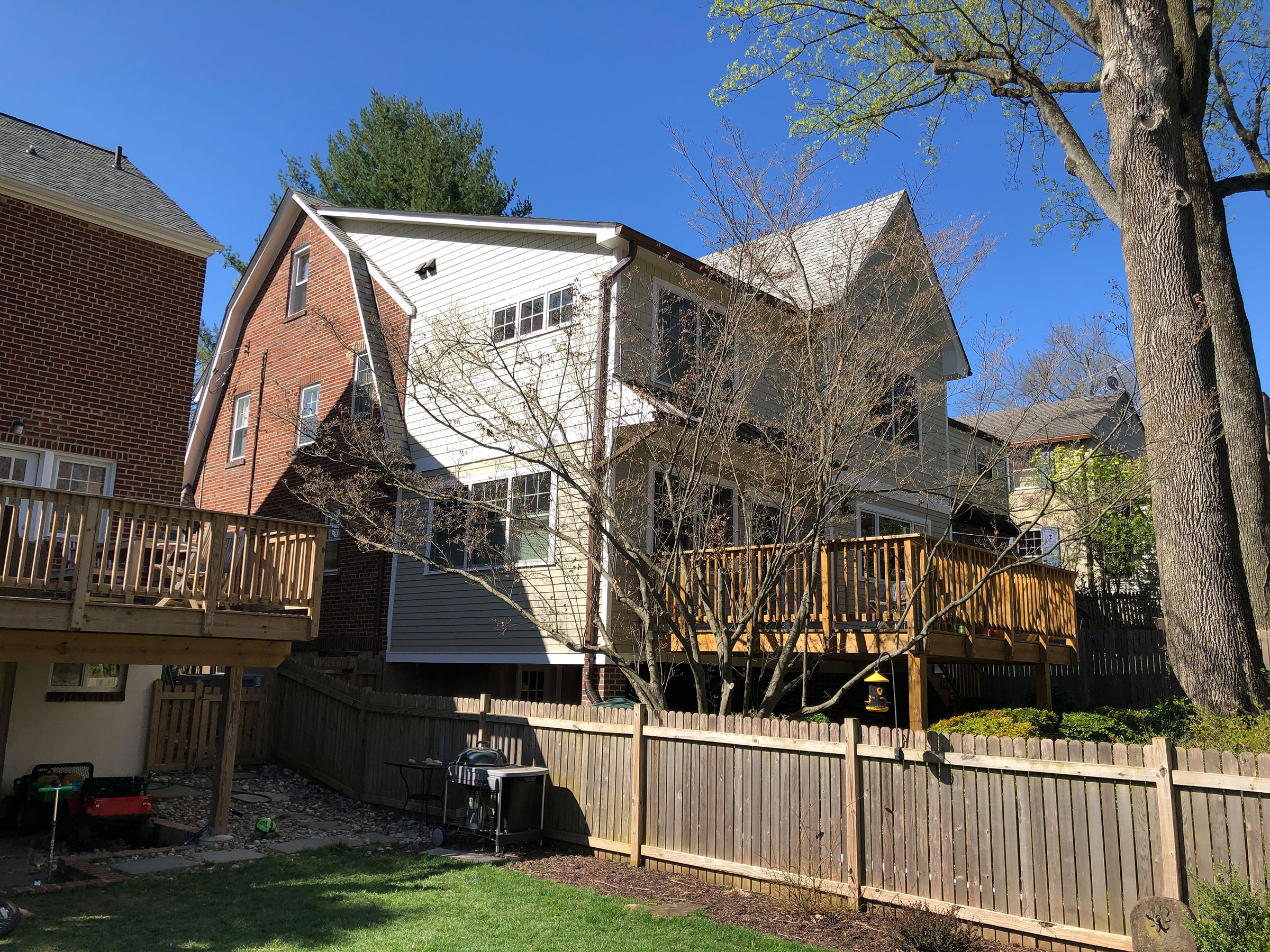Planning a home addition in one of Washington DC’s historic districts requires a thoughtful balance between modern needs and preservation of historical character. These neighborhoods – from Capitol Hill and Georgetown to Cleveland Park – are cherished for their architectural heritage. Expanding a historic home can give you much-needed space and functionality, but it comes with unique challenges in terms of regulations, design, and construction. In this guide, we’ll walk through how to plan a historic home addition in Washington DC while respecting the past and meeting all the requirements. We’ll also highlight how Noel Design Build’s expertise in craftsmanship, sustainability, and navigating DC’s permitting and preservation regulations can turn a complex process into a rewarding project.
Navigating DC’s Historic Preservation Regulations and Permits
Understand the rules early. In DC’s historic districts, any addition or exterior alteration must go through a historic preservation review on top of the standard building permit process. This means your project will be evaluated by the Historic Preservation Office (HPO) and potentially the Historic Preservation Review Board (HPRB) to ensure it doesn’t harm the historic character of the property or neighborhood. No building permit can be issued until the preservation authorities approve the plans (chrs.org), so build this into your timeline. The size of your addition will affect the review process: small additions (under 500 square feet) can often be approved by HPO staff within a few days, but larger additions usually must be reviewed in a public HPRB hearing, which is held only twice a month. In other words, a big addition means a longer lead time for approvals.
Plan for zoning and permitting challenges. Beyond preservation review, your addition must comply with DC zoning and building codes. Zoning regulations in Washington DC set limits on building height, lot coverage, and how far you can extend your home. For example, most residential zones in DC limit lot occupancy (the percentage of your lot that can be built upon) to about 40–60% (steadily.com). There are also rules specific to rowhouse neighborhoods that can impact additions. DC recently tightened regulations to prevent overly large rear additions on row houses – generally you can’t build an addition that extends more than 10 feet beyond your neighbor’s rear wall (planetizen.com). This “10-foot rule” is meant to protect neighbors’ light and privacy, but it can constrain your design. If your dream addition conflicts with zoning (for instance, exceeding lot coverage or that 10-foot limit), you might need to seek a special exception or variance – an additional approval that can add complexity. An experienced design-build team like Noel Design Build will check these constraints early and design within them or help pursue the necessary zoning relief if needed. Remember also that any addition will need a building permit review for structural and safety codes, so having complete, professional plans is crucial for a smooth permit process.
Work with the preservation process, not against it. DC’s Historic Preservation Office isn’t there to prevent you from improving your home – their goal is to guide changes so that they’re compatible with the historic district. Engage with HPO early by submitting concept designs or scheduling a consultation if possible. In many cases, HPO staff can approve a well-designed, modest addition administratively if it clearly meets their standards. For more significant projects, you’ll submit to the HPRB. It’s wise to allow a few extra months for this review stage and to be open to feedback. The reviewers may request adjustments (like setting the addition further back, or using certain materials) to better preserve the neighborhood’s character. Navigating these regulations is much easier with professionals who have done it before – Noel Design Build’s team has decades of experience getting projects approved in DC’s historic districts, so we know how to anticipate what officials will look for and prepare the necessary documentation. Our familiarity with the permit and HPRB process means we can save you time and stress by handling the “paperwork maze” for you, ensuring all boxes are checked and approvals obtained as efficiently as possible.

Designing a Compatible Addition for Your Historic DC Home
Design is where your vision and the historic preservation requirements meet. The key principle can be summed up in one word: compatibility. According to DC’s historic design guidelines, “Existing and new additions should be compatible with the original building and the character of the neighborhood.” Compatibility is achieved by carefully considering factors like setback, height, scale, proportion, orientation, materials, and details (planning.dc.gov). In practical terms, this means your addition should “blend in” with the historic home – it can be distinguishable as new, but it must respect the forms and features of the old.
Prioritize the historic facade and street view. In Washington’s historic districts, the most important architectural features of homes are usually the front façade visible from the street. As a result, historic regulators typically frown upon any large changes to the front of the house. Additions nearly always need to be located at the rear (or occasionally the side, on a corner lot) so that the historic front remains intact. For example, if you own a 19th-century rowhouse, you likely cannot add a new story on top of the original roof – the HPRB has often found such vertical additions inconsistent with preservation goals because they alter the building’s height and character. (In rare cases, a small pop-up or roof deck might be allowed if it’s completely hidden from public view.) A better approach is extending toward the back. Rear additions can often be approved if they do not destroy important historical features and are similar in scale and form to the existing house. This might involve setting the new construction slightly lower in height or with a subtle inset so that the original structure remains the visual focal point. Noel Design Build’s architects excel at this “dance” of old and new – we carefully study your home’s architecture and the patterns of the surrounding homes to design an addition that feels organic. Our goal is an addition that “looks like it has always belonged there” by echoing key design elements of the original house (roof shape, window proportions, materials, etc.), while still delivering the modern layout or amenities you desire.
Match materials and craftsmanship. One hallmark of a successful historic addition is the use of complementary materials and craftsmanship that honors the original. In a DC historic district, you may even be required to use specific materials – for instance, wood siding or brickwork that matches the existing walls – especially on any parts of the addition that might be visible from the street. Detailing matters: cornices, trim, windows, and masonry should all be in harmony with the historic style of the home. This is where Noel Design Build’s commitment to fine craftsmanship truly shines. We have skilled carpenters and restoration specialists who can recreate period-appropriate moldings, replicate antique millwork, or expertly tie in new brick with old so the transition is seamless. Our team prides itself on executing additions that preserve notable architectural details “effectively and perfectly,” ensuring the new construction will last for decades and look as if it were part of the original (noeldb.com). By using time-honored techniques alongside modern construction methods, we maintain the historic aesthetic without sacrificing quality. Throughout the design phase, keep an eye on the details: choosing historically accurate door and window styles, rooflines, and even paint colors can all help your addition pass muster with the HPRB and delight the history-loving eye.
Embracing Sustainability in a Historic Home Addition
Renovating or expanding a historic home is a great opportunity to improve its overall performance and sustainability. While 100-year-old houses weren’t built with green technology, your addition can bring 21st-century sustainability into the mix – all while respecting the historic fabric. In fact, one could argue that preservation and sustainability go hand in hand: by reusing an existing building and extending its life, you’re practicing a very effective form of recycling. At Noel Design Build, we approach every project with an eye toward sustainable design and construction. Our philosophy is that “smart design, and durable, quality construction that will last, is in and of itself green.” We build additions to stand the test of time (noeldb.com), using sturdy, lasting materials – this reduces waste in the long run and honors the longevity of historic homes that have already stood for generations.
Upgrade efficiency (without altering historic appearance). A well-planned addition can significantly improve your home’s energy efficiency and comfort. For example, when adding new walls or a roof, we can install high-performance insulation that dramatically cuts down on drafts and heat loss – something older homes often struggle with. Modern HVAC systems can be integrated to serve both the new and old sections of the house, providing better heating and cooling with less energy. Noel Design Build favors energy-efficient HVAC systems and appliances, plus low or no-VOC building materials that make your home healthier to live in. We also salvage and recycle demolition debris whenever possible, diverting usable materials to reuse centers like Community Forklift, to minimize landfill waste. All these “green” measures happen mostly behind the scenes; from the street, your historic home retains its classic look, but under the hood it’s far more efficient and environmentally friendly.
Consider advanced green features. Depending on your goals, a historic district addition can incorporate cutting-edge sustainable features – with some caveats. Solar panels, for instance, may be allowed if they are not visible from public vantage points (perhaps on a rear-facing roof). Rainwater harvesting systems or green roofs might be options to manage stormwater and insulate the house. We always check historic guidelines to ensure these features are placed sensitively (for example, HPRB typically requires solar installations to be on rear slopes or flat roofs out of sight). Noel Design Build has deep expertise in green building; our staff includes a sustainability expert with over 25 years of experience in eco-friendly design. In one notable project, we oversaw the renovation and addition of a historic row home in Georgetown that achieved LEED Platinum certification, the highest level in the US Green Building Council’s rating system. It was only the second home in DC to earn that honor, proving that even a 19th-century residence can be transformed into a model of energy efficiency and sustainability. While not every homeowner needs a LEED Platinum trophy on the wall, we bring the same knowledge to each project, helping you find the right balance between “green” and practical. Even small steps – like using Forest Stewardship Council (FSC) certified wood, installing water-efficient fixtures, or opting for a high-efficiency water heater – can make your historic home addition more sustainable. The result is a home that honors the past and is ready for the future, with lower utility bills and a smaller environmental footprint to boot.
Working with Experienced Professionals for Historic Additions
Given the complexity of historic district projects, one of the best decisions you can make is to assemble the right team of professionals. An architect or design-build firm with specific experience in historic Washington DC homes will be invaluable. They will know the local preservation rules inside and out, have relationships with review agencies, and understand how to solve the unique challenges that older structures present. When you partner with Noel Design Build for a historic home addition, you get a team that has navigated these waters many times before. We specialize in historic restoration and additions – it’s been a core part of our business in DC for over 25 years. Our expertise means we can anticipate issues and address them proactively: from shoring up an old foundation to accommodate new loads, to sourcing matching antique bricks, to filling out that HPRB application perfectly the first time. We coordinate every aspect of design and construction under one roof, which streamlines communication and reduces the chance of surprises or delays.
Collaboration and craftsmanship. Working on historic homes often involves a collaborative approach. In addition to the homeowner and our design-build team, there might be preservation officials, neighborhood representatives, or specialty consultants (like structural engineers familiar with historic buildings) in the mix. Noel Design Build is comfortable working as part of this broader team. In fact, our philosophy is that we “work as part of a team with the client, the architect (if outside), and other experts to get the job done on schedule, ensuring it will last for years to come”. We welcome input from local historic committees or your community’s preservation society – their insights can help make the project smoother and more warmly received. Our project managers will keep you informed at every step, from initial concept to the final walkthrough, so you’re never in the dark. And when it comes time to build, our seasoned craftsmen take genuine pride in their work on historic homes. Every nail, every piece of trim, every brick is handled with care because we know we’re not just building an addition, we’re extending the legacy of a piece of Washington’s history.
Expect the unexpected (and have experts ready). Older homes have their quirks – floor joists that aren’t standard sizes, walls that aren’t plumb, perhaps even hidden surprises like old wells or buried cisterns on the property. Part of planning a historic home addition is being prepared to solve problems that modern construction on a blank slate wouldn’t encounter. By choosing an experienced firm, you gain the ability to problem-solve effectively. For instance, if we open up a wall and discover vintage knob-and-tube wiring or a structural deficiency, our team knows how to handle it safely and integrate necessary upgrades without derailing the project. We also ensure all work is done in a way that protects the parts of the house that are to remain – we might use techniques like temporary shoring, custom bracing, or surgical demolition to preserve historic elements adjacent to new construction. These are the kind of skills that come only with experience. Ultimately, working with pros who understand both modern construction and traditional building methods means your addition will be beautifully integrated and built to high standards, with minimal headaches along the way.
Bringing Your Vision to Life (Conclusion)
Adding onto a historic home in Washington DC’s protected districts is certainly more involved than a run-of-the-mill addition – but with careful planning and the right expertise, it can be one of the most rewarding home improvements you’ll ever undertake. You’ll gain new space and functionality tailored to your lifestyle, all while enhancing (not detracting from) the historic charm that makes your home special. Remember to start with a solid plan: research the preservation guidelines for your neighborhood, consult early with officials or knowledgeable professionals, and be willing to adapt your design to meet compatibility standards. Emphasize quality design and construction, because doing it right the first time is especially important when working with irreplaceable historic structures. When you invest in good design, skilled craftsmanship, and sustainable building practices, the result will be an addition that feels like a natural extension of your house’s story.
Ready to take the next step? Noel Design Build is here to help you navigate every aspect of planning a home addition in DC’s historic districts – from concept drawings and HPRB approvals to the final coat of paint. With our blend of preservation know-how, fine craftsmanship, and green building expertise, we’ll ensure your historic home addition is a beautiful marriage of old-world character and modern comfort. Contact Noel Design Build today to start a conversation about your historic home addition. Let us partner with you to preserve the past and build your future, creating the space you need with the care your classic Washington home deserves.

